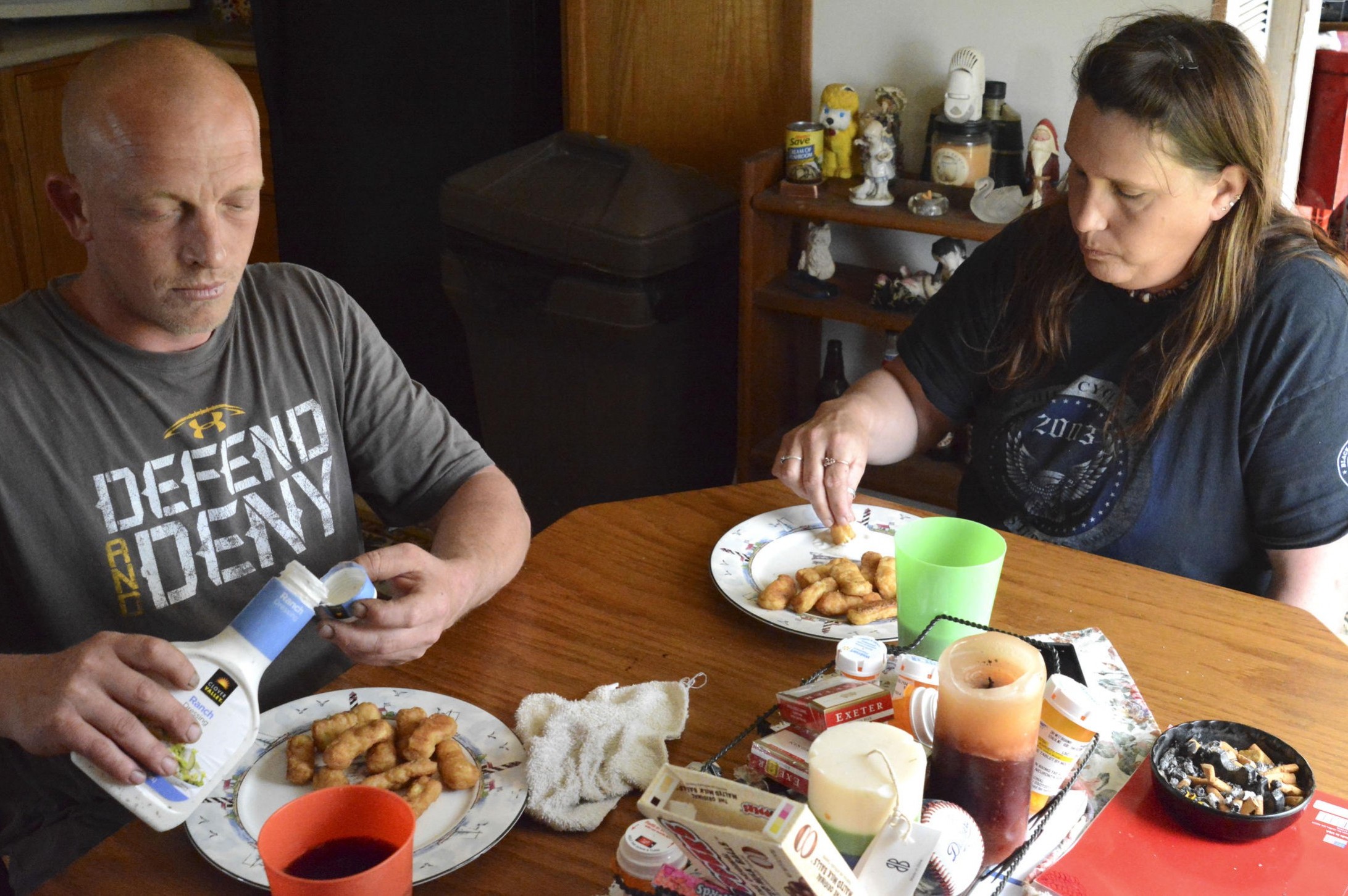I woke up yesterday hungry. Since my last shopping trip four days before, I’d not eaten much, saving most of the food for my younger daughter, who is two. I also woke up with a bank account that was overdrawn, and was waiting on a paycheck that was a week overdue.
My diet is small and not varied compared to what my daughters eat. While I subsist off of eggs, chicken, frozen veggies, hummus, and apples with nut butters, they eat an assortment of fresh fruit. I love waking up and making them pancakes and bacon, cutting up strawberries and plums, and setting the table to watch them eat.
For a long time—about five years while I worked and put myself through college—it was rare that I felt pride in setting the table full of good food. My older daughter was thin, sometimes so thin I worried that our food insecurity was the cause. I hovered over her when she ate, stressing over any food she left that would go to waste.
Get TalkPoverty In Your Inbox
Whenever we came into some unexpected money, like a grocery store gift certificate that I won once as a door prize, I asked Mia what we should buy. Mia, age seven at the time, exclaimed “Blueberries!” and “Raspberries!” and other fruits we normally couldn’t afford.
When birthdays came, I used food stamps to buy treats like cupcakes or take-and-bake pizza. This was our life for so long.
But for several months now, despite a recent dip in funds, I have been able to purchase our food without food stamps. Being able to eat good quality food has brought me joy. I love watching my toddler eat to her heart’s content. I love that she has a belly that sticks out. I love that she is visibly well-fed.
So this morning, when a friend of mine shared this blog post with me, I was deeply affected by it. The lead image is of a white man, sitting by a stove with a pot on it. He is dressed in overalls, holding a cigarette, and looks to be from the Depression-era. In the post, Joshua Fields Milburn, one of “The Minimalists,” writes of dropping from 240 to 160 pounds. He suggests that he lost the weight because he no longer looks to food for entertainment: “The difference is I don’t turn to food to entertain me, to comfort me, or to ‘get me through tough times.’”
He writes this below the photograph of the man who looks to be living in dire straits, and most-likely is hungry. That person is not unlike many people in America who live in extreme poverty, who sometimes have to sell their food stamps for cash to pay for utilities and shelter while donating blood plasma for income because they cannot find jobs to support their families. Is Milburn drawing a parallel between the choices he makes about food, and the choices of those who are struggling in poverty?
For me the piece plays right into the hands of politicians, who judge and try to control how people who are struggling spend what little we have. These politicians push for laws to keep the poor from purchasing “luxury items” like high-end meats, seafood, and cakes, as if we are frivolous. They point to unhealthy eating habits as the cause of obesity among those trying to make ends meet, but it is not because people are choosing junk food over fruit. It is because they are walking into a store with $50 to last a family of three an entire week, and looking for the cheapest food, with the highest caloric content, that is easiest to prepare after a day of working long hours at a minimum wage job. It is because they are growing up, like my older daughter did, pressured to eat what is served because there isn’t enough to get through the month. It is because they are gorging on rare sugary treats when they are available.
Milburn’s post spurred in me a deep sadness and anger. For many food insecure people, the ability to serve their family a nice meal is indeed a source of comfort, their only entertainment, and a moment of pride.
Yesterday, when I checked the mail, I found not one, but two paychecks. As soon as those payments were deposited in the bank, I went straight to the grocery store. I bought strawberries and plums. I bought the crackers my daughter loves. When I picked her up from daycare, I told her about my trip to the store, and what I could feed her when we got home. I cut up an apricot, cooked up a package of bacon, and let her eat all the fruit she wanted. She went to sleep sticky with syrup from pancakes, greasy from bacon, and dyed red from strawberries.
It is just the three of us in our little family. In our town, and the nation, it feels as if people are struggling more. The times feel uncertain, unsafe, and sometimes overwhelming. But, despite all that, I can provide my girls a home. I can give them a space where they feel loved, valued, and most importantly, well-fed. Doing that—feeding them the food they love—is what gets me through the really hard times.
And that’s not just entertainment.












